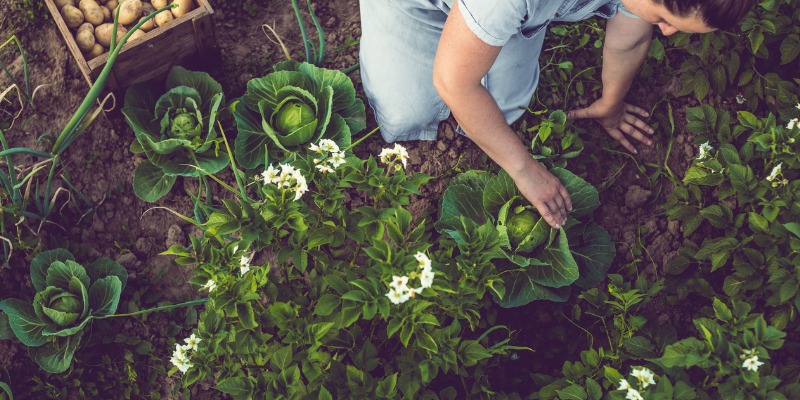When people are aiming to buy organic produce from the store, they might look into labels and the strict definitions that regulatory bodies have for them. But, when you’re growing an organic vegetable garden in your own backyard, you can set your own standards for what is and isn’t organic, and how chemical-free, sustainable, or natural you want your vegetables to be. Perhaps that’s why backyard organic vegetable patches are so popular now. If you want to join the trend, where do you start? Here’s a guide to help.
Step 1: Plan Your Plot
When you’re growing organic vegetables, you may not want to use the quick fixes that are available to correct common gardening problems that come up. So, planning is much more important than normal. You will want to pin down exactly what and exactly where you want to grow it. Especially at first, try to grow things that are easier to grow in your climate and have few pests. Many organic gardeners will want to choose non-GMO seeds or heirloom varieties. Also, choose a plot that will have the right levels of light for what you want to grow.
Step 2: Test Your Soil
The soil is the foundation of your success as a gardener. Again, you will not want to use chemical shortcuts to fix problems with your soil. So, knowing what you’re working with and adjusting beforehand is important. We suggest you take a sample of the soil from where you’ll put your plot and send it for professional testing at local garden centers or labs.
Any place you send it should test the basics, such as nitrogen content and potentially harmful substances in the soil. Alert the testers that you’re planning on doing some organic gardening and they will have additional tips and information for you about what is in your soil.
Want a beautiful garden but do not want to set it up yourself? The experts at Lawrence Park Complete Garden Care are here to help with garden setup and maintenance! Contact us today!
Step 3: Amend Your Soil
Once you find out what you’re working with, you may want to add natural fertilizers and organic materials to your soil in order to improve it. Then you may also want to determine the kind of soil management you’ll be using. Some prefer no-till methods, where they leave the ground intact always to protect the soil’s microbiome and delicate structure. Other organic gardeners will find they want to till to add in more organic fertilizers or organic matter and keep improving the soil year-over-year.
Step 4: Pest Planning
Pests happen even in organic gardens. If you want to handle them in an environmentally-sound way, you should consider the principles of Integrated Pest Management. These are safe ways to address pests depending on the specific pest and the scale of the problem that they are causing. You start by monitoring pests and deciding at what point you will intervene in them.
Hire a Professional to Start Your Vegetable Garden
At Lawrence Park Complete Garden Care, we can help you maintain the organic vegetable garden of your needs or maintain other aspects of your landscape so you can spend your time on your veggie garden. Contact us today!
